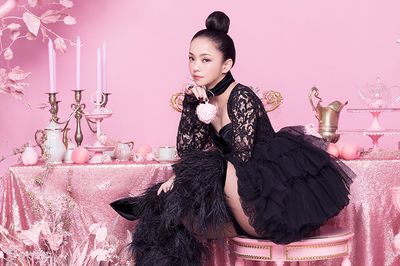Difference between revisions of "Amuro Namie"
| Line 52: | Line 52: | ||
2002 saw two more activities from Amuro: the release of "[[Wishing on the Same Star|Wishing On The Same Star]]" (film ''[[Inochi]]''<nowiki>'</nowiki>s theme song and written by hit-producer [[wikipedia:Diane Warren|Diane Warren]]) and her debut SUITE CHIC release, "[[Good Life / Just Say So|GOOD LIFE / Just Say So]]". This single did not chart anywhere near where Amuro had charted for the last eight years (only peaking at #35) | 2002 saw two more activities from Amuro: the release of "[[Wishing on the Same Star|Wishing On The Same Star]]" (film ''[[Inochi]]''<nowiki>'</nowiki>s theme song and written by hit-producer [[wikipedia:Diane Warren|Diane Warren]]) and her debut SUITE CHIC release, "[[Good Life / Just Say So|GOOD LIFE / Just Say So]]". This single did not chart anywhere near where Amuro had charted for the last eight years (only peaking at #35) | ||
| − | Amuro returned to solo activities on her own with the single "[[ | + | Amuro returned to solo activities on her own with the single "[[shine more]]", released on March 6, 2003. The subsequent single "[[Put 'Em Up]]", released on July 16, 2003, was produced by [[wikipedia:Dallas Austin|Dallas Austin]]. On October 16, 2003, the double a-side single "[[SO CRAZY / Come]]" was released. "[[generasia:SO CRAZY / Come|SO CRAZY" was written by American R&B producers Full Force. At the end of the year, she released her first original studio album in three years, [[STYLE]]. From November 29, 2003 to April 11, 2004, she performed on the [[namie amuro SO CRAZY tour featuring BEST singles 2003-2004]]. Shortly after the tour, she released the ballad "[[ALL FOR YOU]]"; this was followed by the double A-side single "[[GIRL TALK / the SPEED STAR]]", released on October 14, 2004. The single debuted at the top position on the Oricon daily chart and reached the number-two position for the week, making it her first Top 3 single in two years. |
Following the 2004 Indian Ocean earthquake disaster in Southeast Asia, Amuro participated as the only Japanese representative at MTV Asia Aid in February 2005. She donated ¥10 million (approximately USD$90,000) to UNICEF for children who were affected by the disaster. | Following the 2004 Indian Ocean earthquake disaster in Southeast Asia, Amuro participated as the only Japanese representative at MTV Asia Aid in February 2005. She donated ¥10 million (approximately USD$90,000) to UNICEF for children who were affected by the disaster. | ||
| − | On April 6, 2005, she released the single " | + | On April 6, 2005, she released the single "[[WANT ME, WANT ME]]". The song was a well-received hit at home debuting at the number-two position. On May 29, she performed at the MTV Video Music Awards Japan for the fourth consecutive year in a row. She received two awards, "Best R&B Video" and "Most Impressive Performing Asian Artist", making the first artist to receive awards four years in a row at the MTV Video Music Awards Japan. She took home the "Inspiration Award Japan" in 2002, "Best Collaboration" in 2003, "Best R&B Video" for 2004, and 2005 as well as "Most Impressive Performing Asian Artist" in 2005. On July 13, 2005, she released her sixth original studio album, [[Queen of Hip-Pop]]. In collaboration with MGM Studios, Amuro used the Pink Panther character in the album; a female panther counterpart was created for the album as well. When the album was completed, Amuro said that she had not been able to sing the songs very well yet. In September 2005, Amuro held her seventh national tour, [[Space of Hip-Pop -namie amuro tour 2005]]. Shortly after the start of her tour, she announced that she would contribute to the Japanese theaterical release of [[wikipedia:Sin City|Sin City]]. After viewing the movie, Amuro made an offer to the Japanese distribution company to sing its theme song; the company, feeling that her image fit the movie, accepted her offer. Director Robert Rodriguez was impressed by the song and asked to be a part of it; he can be heard saying "Welcome to Sin City" towards the end of the song. The theme song, "Violet Sauce", was later released as part of a double A-side single, "[[White Light / Violet Sauce]]", on November 16, 2005. Shortly after the single, she released Filmography 2001-2005 a compilation of twelve of her music videos from 2001 to 2005. |
Amuro collaborated with Zeebra, AI, and Mummy-D on Zeebra's album The New Beginning, released on February 15, 2006, in a song called "Do What U Gotta Do". On May 17, she released the double A-side single "Can't Sleep, Can't Eat, I'm Sick/Ningyo", which debuted at the number-two position on the oricon weekly chart. In August 2006, she began her tour Namie Amuro Best Tour "Live Style 2006". On September 17, she performed to an audience of 12,000 at Yoyogi National Stadium in Tokyo, Japan. She stated that she would do the performance greater than ever before in 2007. | Amuro collaborated with Zeebra, AI, and Mummy-D on Zeebra's album The New Beginning, released on February 15, 2006, in a song called "Do What U Gotta Do". On May 17, she released the double A-side single "Can't Sleep, Can't Eat, I'm Sick/Ningyo", which debuted at the number-two position on the oricon weekly chart. In August 2006, she began her tour Namie Amuro Best Tour "Live Style 2006". On September 17, she performed to an audience of 12,000 at Yoyogi National Stadium in Tokyo, Japan. She stated that she would do the performance greater than ever before in 2007. | ||
Revision as of 05:55, 21 July 2012

Amuro Namie (安室奈美恵) is a Japanese "Hip-Pop" (Hip-Hop / Pop) artist from Okinawa. She debuted in an eurobeat group called the SUPER MONKEYS comprised of her and her classmates from the Okinawa Actors' School in 1992 with the single "Koi no Cute Beat / Mister U.S.A.". Amuro became the leader of the group, and found success after their cover of "TRY ME ~Watashi wo Shinjite~", which peaked at #8. In 1996, Amuro switched to avex trax and debuted with the single "Body Feels EXIT", with her first avex album selling over 3.3 million copies. Her biggest single, the ballad "CAN YOU CELEBRATE?", was the top single of 1997. After marriage and personal tragedy, Amuro continued to adopt a more R&B / Hip-Hop based style of music. Amuro has approximately sold 35,000,000 copies in Japan.
Profile
- Name: Amuro Namie (安室奈美恵)
- Birthday: September 20, 1977
- Birthplace: Naha, Okinawa Prefecture
- Blood Type: O
- Family: Parents (divorced), mother (deceased), two sisters, one brother, one son
- Height: 159cm (5'2")
- Weight: 40kg (88 lbs)
- Measurements: B75 W58 H84
- Ethnicity: 75% Japanese, 25% Italian
- Tattoos: Two on her left arm, two on her right wrist
Information
Early Life - SUPER MONKEYS
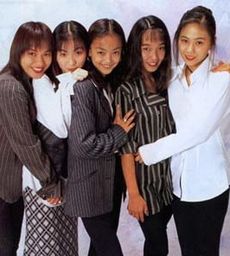
Amuro Namie comes from the island of Okinawa, below Japan. Her mother is half-Italian and she has three siblings. When Amuro was four, her mother divorced her father and brought up three children as a solo mother. Amuro was influenced by Janet Jackson when she was young and wanted to dance and sing. To fulfill this dream, Amuro tried to enter the prestigious Okinawa Actors' School. However, she did not have enough money at the time to enter the school, so she made a request to the principal of the school, Makino Masayuki, who granted her a scholarship to attend. Amuro faced a commute time of one and a half hours to get to school.
Amuro was made a part of an idol group alongside several of her classmates from the school and formed the group SUPER MONKEYS. The group debuted in February 1992 under the label Toshiba EMI with the single "Koi no Cute Beat / Mister U.S.A.". One member, Makino Anna, was even the principal's daughter. After Makino left, Amuro became the leader of the group; slowly growing in prominence. This is most illustrated by the group changing their name to Amuro Namie with SUPER MONKEYS. The group did not see real success until their cover of "TRY ME ~Watashi wo Shinjite~", which peaked at #8. By the release of "Taiyou no SEASON", the other members' roles were so small that Amuro was solely credited with the song and the other members acted as back-up singers for her.
Avex - Marriage
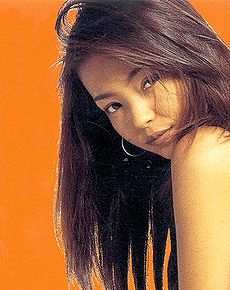
In 1995 Amuro and her bandmates switched labels from Toshiba EMI to avex trax after meeting with Komuro Tetsuya and Max Matsuura. However, the SUPER MONKEYS were dissolved in favor of two acts: Amuro now has a solo project and the other members form a new group called MAX. Amuro debuted with the single "Body Feels EXIT", followed two months later with her first #1 single, "Chase the Chance".
Her further singles "Don't wanna cry" and "You're my sunshine" (both #1 singles) solidified her success, accumulating in her debut album under avex, entitled SWEET 19 BLUES, as it not only reached #1 but going on to sell over 3.3 million copies. Due to Amuro's success and image, she soon became a fashion leader in Japan. Followers of her style were labeled as 'Amura' (a pun on her name). The stereotypical 'Amura' had long hair dyed brown, wore short mini-skirts, had thin eyebrows and wore "atsuzoko" thick-soled boots.
Amuro found the greatest success in her career in 1997 with the single "CAN YOU CELEBRATE?". This ballad single was used as the dorama Virgin Road's theme song, and became the #1 single of 1997 due to its massive popularity. Amuro's success during this pine period also resulted in a massive increase in interest for Okinawan artists.
On October 22nd 1997, Amuro shocked fans and members of the press with the announcement that she had married label-mate SAM, a member of the avex dance group TRF. Furthermore, she announced that she was three months pregnant and went on a one year hiatus to concentrate on her son. In the meantime, two Amuro products were released: a re-issue of her "CAN YOU CELEBRATE?" single featuring a 'wedding' arrangement (which reached #1 again) and also her first best-of collection, entitled 181920. On May 19th 1998, her son, Haruto (温大), was born.
Return to Industry - Tragedy

Amuro returned to the music scene in December 1998 with the single "I HAVE NEVER SEEN", used as the dorama Yonige-ya Honpo's theme song, which reached #1 on the charts. Three months later, Amuro released a second single, a ballad "RESPECT the POWER OF LOVE", on March 17th 1999. However, tragedy struck when on the day of the single's release: her mother Taira Emiko (平良恵美子) was brutally murdered by Amuro's step-uncle Taira Kenji. According to press statements, Taira Emiko was walking with her husband (second marriage - not Amuro's father) when Taira Kenji repeatedly ran over the couple and also assaulted them with an axe. While Amuro's step-father survived the ordeal, Taira Kenji later committed suicide after the event.
After taking another break from the industry (Amuro later left a message to her fans in January 2000 stating that she had been seriously thinking of retiring, however was convinced not to by the kind words from her fans), Amuro returned with the singles "toi et moi" (Pokémon: The Movie 2000's ending theme song) and "SOMETHING 'BOUT THE KISS". "SOMETHING 'BOUT THE KISS" was Amuro's first real step towards an R&B oriented career: the song was the first of hers to be produced by US producer Dallas Austin.
Amuro's sales had declined significantly since her peak in 1997, however she had a hit single in 2000 with "NEVER END", which sold over 640,000 copies. In 2001, Amuro released her first song, "say the word", that featured direct input from herself as it features lyrics by Amuro herself.
SUITE CHIC - Onwards
In late 2001 Amuro started working as part of a collaborative R&B project called SUITE CHIC in which she was the vocalist. After releasing a special single written for her fans, "I WILL", Amuro's second best-of collection LOVE ENHANCED♥ single collection was released.
On July 10, news came that Amuro had divorced her husband who had received parental rights over their son. However, later in 2005, Amuro received these rights back from him.
2002 saw two more activities from Amuro: the release of "Wishing On The Same Star" (film Inochi's theme song and written by hit-producer Diane Warren) and her debut SUITE CHIC release, "GOOD LIFE / Just Say So". This single did not chart anywhere near where Amuro had charted for the last eight years (only peaking at #35)
Amuro returned to solo activities on her own with the single "shine more", released on March 6, 2003. The subsequent single "Put 'Em Up", released on July 16, 2003, was produced by Dallas Austin. On October 16, 2003, the double a-side single "SO CRAZY / Come" was released. "[[generasia:SO CRAZY / Come|SO CRAZY" was written by American R&B producers Full Force. At the end of the year, she released her first original studio album in three years, STYLE. From November 29, 2003 to April 11, 2004, she performed on the namie amuro SO CRAZY tour featuring BEST singles 2003-2004. Shortly after the tour, she released the ballad "ALL FOR YOU"; this was followed by the double A-side single "GIRL TALK / the SPEED STAR", released on October 14, 2004. The single debuted at the top position on the Oricon daily chart and reached the number-two position for the week, making it her first Top 3 single in two years.
Following the 2004 Indian Ocean earthquake disaster in Southeast Asia, Amuro participated as the only Japanese representative at MTV Asia Aid in February 2005. She donated ¥10 million (approximately USD$90,000) to UNICEF for children who were affected by the disaster.
On April 6, 2005, she released the single "WANT ME, WANT ME". The song was a well-received hit at home debuting at the number-two position. On May 29, she performed at the MTV Video Music Awards Japan for the fourth consecutive year in a row. She received two awards, "Best R&B Video" and "Most Impressive Performing Asian Artist", making the first artist to receive awards four years in a row at the MTV Video Music Awards Japan. She took home the "Inspiration Award Japan" in 2002, "Best Collaboration" in 2003, "Best R&B Video" for 2004, and 2005 as well as "Most Impressive Performing Asian Artist" in 2005. On July 13, 2005, she released her sixth original studio album, Queen of Hip-Pop. In collaboration with MGM Studios, Amuro used the Pink Panther character in the album; a female panther counterpart was created for the album as well. When the album was completed, Amuro said that she had not been able to sing the songs very well yet. In September 2005, Amuro held her seventh national tour, Space of Hip-Pop -namie amuro tour 2005. Shortly after the start of her tour, she announced that she would contribute to the Japanese theaterical release of Sin City. After viewing the movie, Amuro made an offer to the Japanese distribution company to sing its theme song; the company, feeling that her image fit the movie, accepted her offer. Director Robert Rodriguez was impressed by the song and asked to be a part of it; he can be heard saying "Welcome to Sin City" towards the end of the song. The theme song, "Violet Sauce", was later released as part of a double A-side single, "White Light / Violet Sauce", on November 16, 2005. Shortly after the single, she released Filmography 2001-2005 a compilation of twelve of her music videos from 2001 to 2005.
Amuro collaborated with Zeebra, AI, and Mummy-D on Zeebra's album The New Beginning, released on February 15, 2006, in a song called "Do What U Gotta Do". On May 17, she released the double A-side single "Can't Sleep, Can't Eat, I'm Sick/Ningyo", which debuted at the number-two position on the oricon weekly chart. In August 2006, she began her tour Namie Amuro Best Tour "Live Style 2006". On September 17, she performed to an audience of 12,000 at Yoyogi National Stadium in Tokyo, Japan. She stated that she would do the performance greater than ever before in 2007.
Revived Popularity
Amuro's next single, "Baby Don't Cry", released on January 24, 2007, was used as the theme song of a Japanese Drama Himitsu no Hanazono. On the oricon weekly chart, "Baby Don't Cry" debuted at the number-three position and she achieved a Top 10 single each year for 13 consecutive years, breaking the solo female artist's record in Japan by Kyōko Koizumi and Shizuka Kudō. It sold over a million ringtone digital downloads and was ranked at number seven on the RIAJ 2007 yearly ringtone sales charts. Amuro's 32nd single, "Funky Town", was released on April 4, 2007. She was also featured on M-Flo's album, Cosmicolor, in a song titled "Luvotomy". Her seventh studio album, Play, was released on June 27, 2007. The album includes 12 songs, four of which are single tracks. The album was said to reflect Amuro's new style, and featured a rock number, and a chic slow song. One of her new songs, "Top Secret" was used as the theme song of the drama series Prison Break Season 2 in Japan. Play took the number-one spot on the Oricon Weekly Chart Rankings, becoming her first number-one album in more than 7 years, with her last number-one occurring in 2000 with her album, Genius 2000. It is also her fourth studio album to reach the number-one position. Play spent two consecutive weeks at the number-one position. From August 18, 2007, to February 27, 2008, she performed her concert tour in Japan Namie Amuro Play Tour 2007-2008 which consisted initially of 53 performances but was increased by 12 performances to 65 performances, making this her biggest tour in terms of number of performances by far.
Amuro's first single of 2008, released on March 12, was an image song for the new Vidal Sassoon marketing campaign Fashion x Music x VS. The title of her new single was confirmed to be "60s 70s 80s", and contained three songs - "New Look", "Rock Steady", and "What A Feeling". These songs have a modern twist from the '60s, '70s, and '80s. The single debuted at the number-two position on the oricon weekly charts with over 114,000 copies sold. In the second week the single gained the number-one spot for that week, making it her first number-one single after 9 years and 3 months since "I Have Never Seen". According to Oricon, "60s 70s 80s" sold nearly 300,000 copies. In May 2008, Amuro also recorded a collaboration with Double in a song called "Black Diamond". On the ringtone download sales chart, it earned double-platinum certification by the Recording Industry Association of Japan. On July 26, about 25,000 people attended the a-nation '08 and saw her performance. Amuro released her third greatest hits album Best Fiction on July 30, 2008. It featured all her singles from 2002's "Wishing on the Same Star" to the recently released "60s 70s 80s". It also featured two new songs, "Sexy Girl" and "Do Me More". "Sexy Girl" was the theme song for NHK drama Otome no Punch that aired on June 19, and the other called "Do Me More" was the campaign song for Vidal Sassoon. Best Fiction sold 681,000 copies on the first week and debuted at the number-one position on the oricon weekly charts. Within its third week, Best Fiction outsold a million copies, and Amuro became the only artist who produced million-selling albums in the oricon chart for three decades of her teens, 20s, and 30s. Best Fiction eventually spent six consecutive weeks at the number-one position, becoming the first album to do so in more than 14 years since the Dreams Come True's 1993 album Magic. Best Fiction became the second best-selling album behind Exile's Exile Love on the Oricon 2008 yearly album charts. In addition, it became the second best selling digital-format album by Japanese artists behind Hikaru Utada's Heart Station on the iTunes yearly album charts in Japan. Best Fiction won the award for "the best album of the year" at the 50th Japan Record Awards.
On January 20, 2009, Sanspo officially announced a new Vidal Sassoon CM featuring Amuro, featuring a song from her entitled, "Dr." Her 33rd solo single, "Wild/Dr.," was announced on January 21, which was a double A-side single released March 18, 2009. Wild was used in a commercial starring Amuro for Coke Zero entitled "Wild Health". On release, it became her 11th #1 single and second consecutive after 60s 70s 80s.[129] She also broke her own record of having all of her singles debut in the Top 10 (on the daily charts) for the last 15 years. Amuro collaborated with ravex on a song for their album trax. The song is called [ROCK U feat. 安室奈美恵] and was released as a radio single. As of June 2009, rumor has begun about the releasing of a summer single with ties to McDonald's. A commercial has been shot for the Quarter Pounder with the tag line being "Big Mouth". On October 1, 2009, hairstyling company Vidal Sassoon released new commercials featuring Amuro and two tracks from her expected album, "My Love" and "Copy That." Namie released her ninth studio album, Past < Future, on December 16, 2009. Released in CD and CD+DVD format, it contained her latest single "Wild/Dr.", and was supported by airplay and video clips of several of the new songs on the album. The album became her sixth number-one original studio album and in terms of sales, surpassed her last studio album, Play. In April, Amuro launched a large-scale, 9-month-long nationwide tour in support of her album, touring 26 cities.
Discography

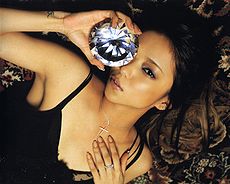
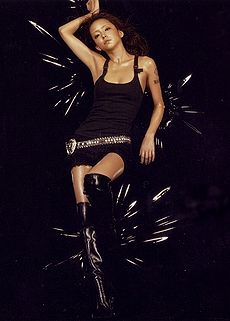
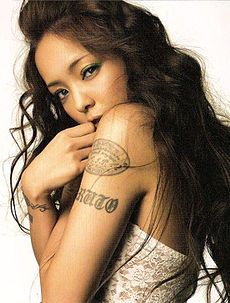

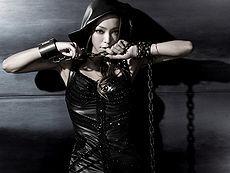


Albums
- [1995.10.16] DANCE TRACKS VOL.1
- [1996.07.22] SWEET 19 BLUES
- [1997.07.24] Concentration 20
- [2000.01.26] GENIUS 2000
- [2000.12.20] break the rules
- [2003.12.10] STYLE
- [2005.07.13] Queen of Hip-Pop
- [2007.06.27] PLAY
- [2009.12.16] PAST < FUTURE
- [2012.06.27] Uncontrolled
Best Albums
- [1996.09.30] ORIGINAL TRACKS VOL.1
- [1998.01.28] 181920
- [2002.03.13] LOVE ENHANCED♥ single collection
- [2004.03.31] 181920 & films
- [2008.07.30] BEST FICTION
- [2011.04.27] Checkmate! (Collaboration Best)
Singles
- [1995.10.25] Body Feels EXIT
- [1995.12.04] Chase the Chance
- [1996.03.13] Don't wanna cry
- [1996.06.05] You're my sunshine
- [1996.08.21] SWEET 19 BLUES
- [1996.11.27] a walk in the park
- [1997.02.19] CAN YOU CELEBRATE?
- [1997.05.21] How to be a Girl
- [1997.11.27] Dreaming I was dreaming
- [1997.12.25] CAN YOU CELEBRATE? (re-release)
- [1998.12.23] I HAVE NEVER SEEN
- [1999.03.17] RESPECT the POWER OF LOVE
- [1999.07.07] toi et moi
- [1999.09.01] SOMETHING 'BOUT THE KISS
- [2000.01.01] LOVE 2000
- [2000.07.12] NEVER END
- [2000.10.04] PLEASE SMILE AGAIN
- [2001.01.24] think of me / no more tears
- [2001.08.08] Say the word
- [2002.02.14] I WILL
- [2002.09.11] Wishing On The Same Star
- [2003.03.05] shine more
- [2003.07.16] Put 'Em Up
- [2003.10.16] SO CRAZY / Come
- [2004.03.17] ALARM
- [2004.07.22] ALL FOR YOU
- [2004.10.14] GIRL TALK / the SPEED STAR
- [2005.04.06] WANT ME, WANT ME
- [2005.11.16] White Light / Violet Sauce
- [2006.05.17] CAN'T SLEEP, CAN'T EAT, I'M SICK / Ningyo (人魚; Mermaid)
- [2007.01.24] Baby Don't Cry
- [2007.04.04] FUNKY TOWN
- [2008.03.12] 60s 70s 80s
- [2009.03.18] WILD / Dr.
- [2010.07.28] Break It / Get Myself Back
- [2011.07.27] NAKED / Fight Together / Tempest
- [2011.12.07] Sit! Stay! Wait! Down! / Love Story
- [2012.03.21] Go Round / YEAH-OH
Vinyls
- [1995.xx.xx] Body Feels EXIT
- [1996.xx.xx] Chase the Chance / Don't wanna cry / You're my sunshine
- [2001.xx.xx] no more tears
- [2001.xx.xx] Say the word
VHS
- [1996.11.14] NAMIE AMURO WORLD
- [1996.12.04] AMURO NAMIE FIRST ANNIVERSARY
- [1997.12.03] Namie Amuro Concentration 20 Live in Tokyo Dome
- [1998.07.01] 181920 films
- [1999.11.14] Amuro world ~chase the chance 19 memories~
- [2000.08.18] NAMIE AMURO TOUR "GENIUS 2000"
- [2001.03.07] filmography
DVDs/Blu-ray
- [2000.08.18] NAMIE AMURO TOUR "GENIUS 2000"
- [2000.09.27] AMURO NAMIE FIRST ANNIVERSARY (DVD reissue)
- [2000.09.27] Namie Amuro Concentration 20 Live in Tokyo Dome (DVD reissue)
- [2000.09.27] 181920 films (DVD reissue)
- [2001.03.07] filmography (DVD reissue)
- [2002.03.13] 181920 films + filmography
- [2002.12.11] BEST CLIPS
- [2003.11.19] namie amuro tour 2001 break the rules
- [2004.09.23] namie amuro SO CRAZY tour featuring BEST singles 2003-2004
- [2004.12.08] namie amuro tour 2001 break the rules (limited pressing edition)
- [2005.03.24] Namie Amuro Concentration 20 Live in Tokyo Dome (limited pressing reissue)
- [2005.03.24] AMURO NAMIE FIRST ANNIVERSARY (limited pressing reissue)
- [2005.03.24] NAMIE AMURO TOUR "GENIUS 2000" (limited pressing reissue)
- [2005.12.07] FILMOGRAPHY 2001-2005
- [2006.03.01] 181920 films + filmography (Limited Low-priced Edition)
- [2006.03.15] Space of Hip-Pop -namie amuro tour 2005
- [2007.02.21] namie amuro BEST tour "Live Style 2006"
- [2008.02.27] NAMIE AMURO PLAY TOUR 2007
- [2009.09.09] namie amuro BEST FICTION TOUR 2008-2009
- [2010.12.15] namie amuro PAST<FUTURE tour 2010
- [2010.12.15] Space of Hip-Pop -namie amuro tour 2005- (blu-ray reissue)
- [2010.12.15] namie amuro BEST tour "Live Style 2006" (blu-ray reissue)
- [2010.12.15] NAMIE AMURO PLAY TOUR 2007 (blu-ray reissue)
- [2011.12.21] namie amuro LIVE STYLE 2011
DVD Audio
- [2004.01.28] LOVE ENHANCED♥ single collection
- [2004.01.28] 181920
Other DVDs
- [1995.09.01] DJ Groove
- [2005.01.19] ZEEBRA - THE LIVE ANIMAL'03 - TOKYO'S FINEST (#16 AFTER PARTY feat. Amuro Namie)
- [2007.09.19] ZEEBRA - ZEEBRA Japan Tour Final "The Live Animal '06 -The New Beginning-" (#19 Do What U Gotta Do feat. AI, Amuro Namie & Mummy-D)
- [2007.10.31] m-flo - m-flo Tour 2007 "Cosmicolor" @ Yokohama Arena (#26 Luvotomy / m-flo loves Amuro Namie)
Compilation / Other
Note: for SUITE CHIC releases, see SUITE CHIC.
- [1995.06.01] Sister Rabbits - Issun Momo Kintarou
- [1996.10.31] Amuro Namie & m.c.A・T - Thunder Party (#2 Joy)
- [1997.01.01] YOU ARE THE ONE (as part of the TK Family)
- [2001.12.27] Amuro Namie & VERBAL - lovin' it
- [2002.03.06] song+nation 2 trance (#4 lovin' it (tatsumaki remix))
- [2002.09.19] Inochi: Original Soundtrack (#9 Wishing On The Same Star (Movie Version), #10 Wishing On The Same Star (Movie Version Instrumental))
- [2003.09.18] ZEEBRA - TOKYO'S FINEST (#12 After Party feat. Amuro Namie)
- [2005.03.24] JHETT aka YAKKO for AQUARIUS - JHETT (#3 Do or Die feat. Amuro Namie)
- [2005.03.30] SUPER EURO GROOVE (#15 J-EURO MEGA-MIX)
- [2005.08.24] JHETT aka YAKKO for AQUARIUS - JHETT BLACK EDITION (#2 Do or Die feat. Amuro Namie [BACH LOGIC Remix feat. NORISHAM-X])
- [2006.02.15] ZEEBRA - The New Beginning (# 15 Do What U Gotta Do feat. AI, Amuro Namie & Mummy-D)
- [2007.03.28] m-flo - COSMICOLOR (#3 Luvotomy' - m-flo loves Amuro Namie)
- [2007.09.27] m-flo - electriCOLOR -COMPLETE REMIX- (#4 Luvotomy -Camp Three-o-three remix-)
- [2008.05.28] DOUBLE - THE BEST COLLABORATIONS (#1 BLACK DIAMOND)
- [2008.08.06] House Nation Best Gig (#3 What a Feeling (Shinichi Osawa Remix))
- [2009.04.29] ravex - trax (#2 ROCK U feat. Amuro Namie)
- [2009.09.02] DJ Caroline D'Amore - J-Girls' Celebrity Mix (#1 What a Feeling [J-GIRLS' CELEBRITY MIX VER.])
- [2011.03.16] VERBAL - VISIONAIR (#2 BLACK OUT feat. Lil Wayne & Amuro Namie)
- [2011.10.05] DOUBLE - WOMAN (#14 Black diamond ~TinyVoice Electr!ck Remix)
Publications
Photobooks
- [1996.11.10] 19770920
Magazines
- [2011.07.23] SPRiNG September 2011 Issue (Feature)
- [2011.08.xx] Sweet (Cover & Feature)
Filmography
- [1994] Toki wo Kakeru Shoujo (時をかける少女)
- [1996] That's Cunning! Shijou Saidai no Sakusen? (That's カンニング! 史上最大の作戦?)
- [2000] Yonigeya Honpo (夜逃げ屋本舗)
External Links
| |||||||||||||||||||||||||||||||||||||||
